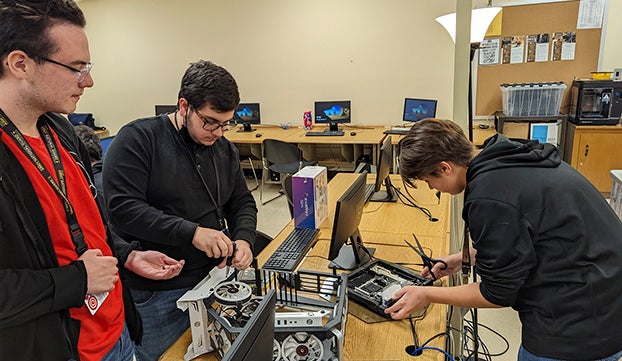Americans feel financial literacy shortfalls cost them
Published 8:55 am Friday, April 5, 2019

- More people feel they are losing more money each year due to financial illiteracy.
Lacking financial literacy and not knowing how to manage one’s personal finances carried a high cost in 2018. The National Financial Educators Council (NFEC) sought to find out how much money people estimated they had lost across the year due to a lack of financial knowledge. In a one-question online survey, U.S. residents were asked, “During the past year (2018), about how much money do you think you lost because you lacked knowledge about personal finances?”
A total of 1,500 participated in the survey between January 1, 2019 and January 4, representing six age groups across the country. Among this diverse group, respondents estimated that lacking knowledge about personal finances cost them an average of $1,230 in 2018. This figure was calculated by averaging the total number of respondents selecting each category, using the lowest number in each spread, according to National Financial Educators Council (NFEC).
Deficient knowledge about money management creates risks that can include bank charges, credit card debt interest, high loan interest rates, and investment losses. And because there may be areas where people lose money, but don’t recall or may not even know they lost money, these results probably underestimate the actual losses people sustain.
Last year, the NFEC conducted a similar financial literacy survey asking the same question. The results were similar with participants showing an average loss of $1,171 in 2017 vs $1,230 in 2018.
Another study by the NFEC conducted in 2016 indicated that U.S. adults estimated experiencing average lifetime losses of approximately $9,725. Reported lifetime losses over $15,000 were reported by 1 out of 3 respondents, and nearly 1 in 4 people reported losses over $30,000 due to a lack of financial knowledge.
“Americans today have to negotiate a very complex financial and economic landscape, and given recent changes to the tax code and new digital currency options, that complexity is only going to increase,” said Vince Shorb, CEO of the NFEC. “Improving people’s ability to make informed financial decisions by teaching personal finance and increasing access to financial education classes is more important now than ever before.”
Out of 3,240 high schools in Texas, only three (Brazosport, Brazoswood and Hillsboro) require students to take a personal finance course to graduate. Without the knowledge or skills to budget, invest or save, students could be looking at a dim financial future.
According to data from the National Financial Educator Council, not knowing enough about personal finance cost Americans a total of $295 billion in 2018. Additionally, there are currently 36.8 million outstanding personal loan accounts and Texas came in second in the country for the highest number of personal loans per person, averaging 1.6.
Teaching Personal Finance is a skill people can acquire by following a specific process.
In January of 2011, Gregg Murset, a father of six was looking for a solution to the problem – how to keep track of his kids’ chores, pay them a weekly allowance, and teach them the basic financial principles surrounding earning, saving, sharing, and spending money wisely. Out of this necessity he developed My Job Chart, one of the very first online chore and allowance apps in the U.S. Immediately it became one of the most popular family tools to help parents teach their children about work ethic and managing money.
Nearly seven years later and evolution is knocking on the door again. Technology has advanced enough to allow a car to drive itself, a private message to automatically disappear in seconds, and money to move from account to account over any mobile device. Technology evolved, families evolved, and so, My Job Chart had to evolve into BusyKid with better security, technology, features and economics solution according to busykid.com.
“When you get a driver’s license you have to take a written exam and a driving exam,” Murset said. “If it [personal finance] was taught in school, it would be the equivalent of the written test for driving.”
To obtain the practical knowledge, one would need to use the knowledge at home.
“BusyKid is a tool used at home to teach children to be proficient in finances,” Murset said.
BusyKid, is the first and only chore and allowance platform where kids can earn, save, share, spend, and invest their allowance.
“Chores are a kids first job,” Murset said. “They do chores to earn money and on Thursday, the parents get a message asking yes or no do they want to pay.”
The funds allocated for saving, sharing or spending. Spending funds are loaded onto a card for the child to use.
“We are becoming a cashless society,” Murset said. “I call it the world of invisible money.”
As the days of piggy banks and coin jars fade, Murset said it is important to teach children how to manage money they never see.
“It teaches work ethics,” Murset said. “They earn the funds and learn to make good financial decisions. With BusyKid, there is complete parental oversight.”





